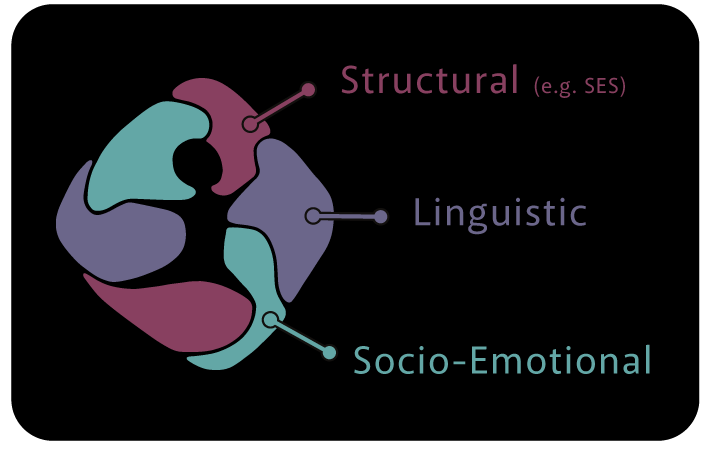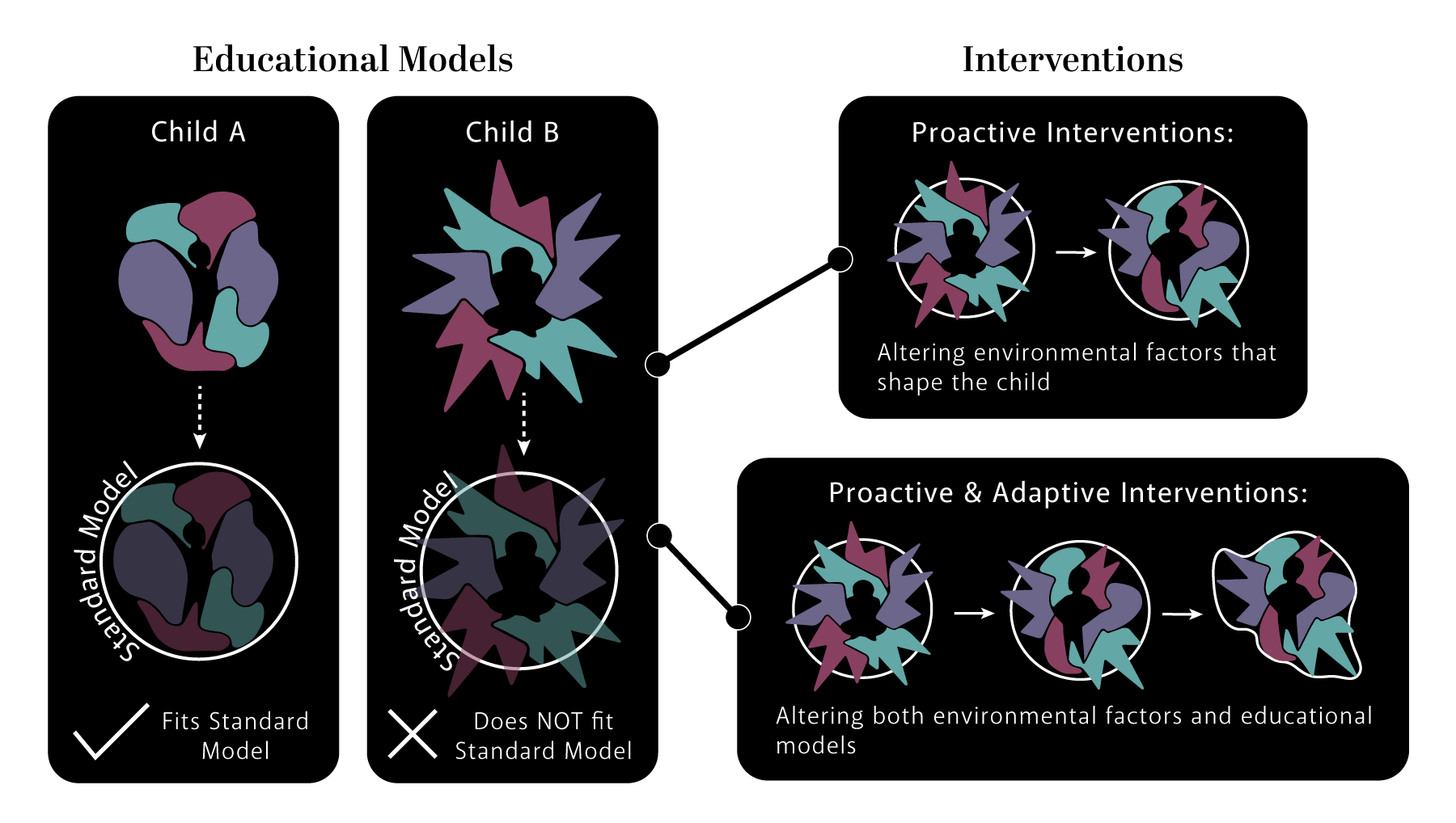

Language, Experience, and Development (LEAD) Lab
Research
In the LEAD lab, we investigate how children are shaped by their experiences and how we can use this information to optimize learning and development.
The role of early experiences in shaping neurocognitive development

In many ways, we are products of our early environments. How we think, act, and learn are in part shaped by experiences we had when we were children. We investigate how various experiential factors influence children's brain development, as well as their cognitive skills, academic achievement, and mental health. Some of the factors we investigate are structural factors, such as socioeconomic status (SES), which affects many aspects of a child's life, such as their access to high quality education, healthcare, and safe living environments. We also investigate specific experiences children have, such as their interactions with caregivers. We are especially interested in the language and communication children experience when they are young, as well as the broader socioemotional context that communication takes place in. For example, we have found that children's conversational experience with adults is associated with brain structure, and brain function that underlie language and literacy development. We have also written reviews on these topics tailored for clinicians and educators. Ongoing projects examine how various dimensions of parent-child interaction scaffold the development of brain circuits for language, executive functioning, and social cognition during the preschool years, and set children up for success in school.
Characterizing risk and resilience to early adversity

Many people have experienced some form of adversity during childhood. These adversities have powerful and lasting influences on children's cognitive, social, and emotional development, and there is evidence that adversity "gets under the skin" by affecting neurobiological development. While some children experience extreme and pervasive adversity, many are exposed to more complex environments, with both adverse and supportive experiences. We are interested in how certain supportive experiences buffer the negative effects of adverse experiences. For example, in some of our ongoing work, we find that strong, parent-child relationships may mitigate the some of the effects of poverty on children's cognitive and affective development. Additionally, two children may respond differently to the same environmental exposure. For example, we have found that children with a familial predisposition for a neurodevelopmental disorder are more sensitive to early language experiences. Examining mechanisms of risk and resilience may help us to tailor interventions to each child's unique circumstances. Ongoing projects are examining the relationships between parental stress and cognitive stimulation in children's cognitive and socioemotional development.
Variability in learning and adaptive interventions

No two children are alike, and no two children learn exactly the same. Because children adapt to their early environments, each child brings a unique set of experiences and skills to learning. Unfortunately, most school models are not designed for such a diversity of learners. This means some children will thrive in a standard school environment, while others will struggle. We investigate what internal and external factors give rise to this variability in learning, and how we can optimize children's learning environments, using two different approaches. In a proactive approach, we try to boost environmental influences that support learning. For example, we find that a family-based intervention focused on parent-child communication induces neuroplasticity and improves a variety of cognitive skills. Additionally, in an adaptive approach, we aim to change the educational models themselves to fit unique learners. For example, we have found that struggling readers from different SES backgrounds respond differently to literacy training, which has implications for tailoring interventions to individual children. Ongoing projects are examining how neural adaptations to early environments may moderate specific learning mechanisms, especially in reading, and what this means for the future of education and increasing educational equity.
Illustrations by Beyond Bounds Creative.